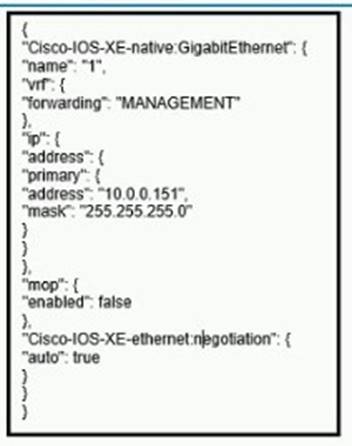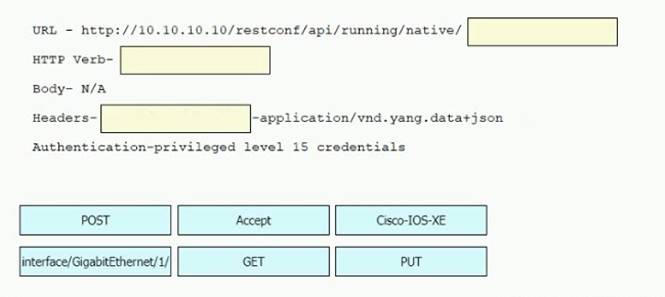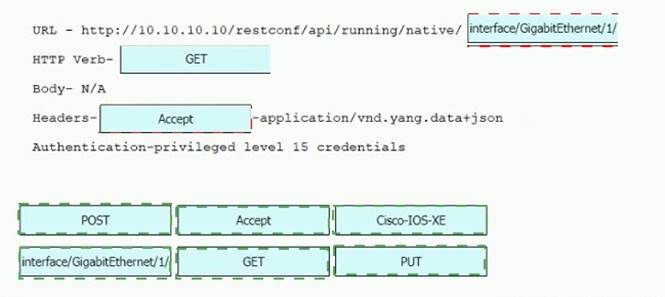- (Topic 2)
An engineer is implementing a Cisco MPLS TE tunnel to improve the streaming experience for the clients of a video-on-demand server. Which action must the engineer perform to configure extended discovery to support the MPLS LDP session between the headend and tailend routers?
Correct Answer:
B
DRAG DROP - (Topic 1)
Refer to the exhibit Drag and drop the snippets into the RESTCONF request to form the request that returns this response Not all options are used
Solution:
Does this meet the goal?
Correct Answer:
A
- (Topic 4)
Refer to the exhibit. An engineer builds an EEM script to apply an access list. Which statement must be added to complete the script?
Correct Answer:
A
- (Topic 2)
A client device roams between access points located on different floors in an atrium. The access points are Joined to the same controller and configured in local mode. The access points are in different AP groups and have different IP addresses, but the client VLAN in the groups is the same. Which type of roam occurs?
Correct Answer:
D
Mobility, or roaming, is a wireless LAN client’s ability to maintain its association seamlessly from one access point to another securely and with as little latency as possible. Three popular types of client roaming are:
Intra-Controller Roaming: Each controller supports same-controller client roaming across access points managed by the same controller. This roaming is transparent to the client as the session is sustained, and the client continues using the same DHCP-assigned or client-assigned IP address.
Inter-Controller Roaming: Multiple-controller deployments support client roaming across access points managed by controllers in the same mobility group and on the same subnet. This roaming is also transparent to the client because the session is sustained and a tunnel between controllers allows the client to continue using the same DHCP- or client-assigned IP address as long as the session remains active. Inter-Subnet Roaming: Multiple-controller deployments support client roaming across access points managed by controllers in the same mobility group on different subnets. This roaming is transparent to the client because the session is sustained and a tunnel between the controllers allows the client to continue using the same DHCP-assigned or client-assigned IP address as long as the session remains active. Reference: https://www.cisco.com/c/en/us/td/docs/wireless/controller/7-4/configuration/guides/consolidated/b_cg74_CONSOLIDATED/b_cg74_CONSOLID ATED_chapter_01100.html
In three types of client roaming above, only with Inter-Subnet Roaming the controllers are in different subnets.